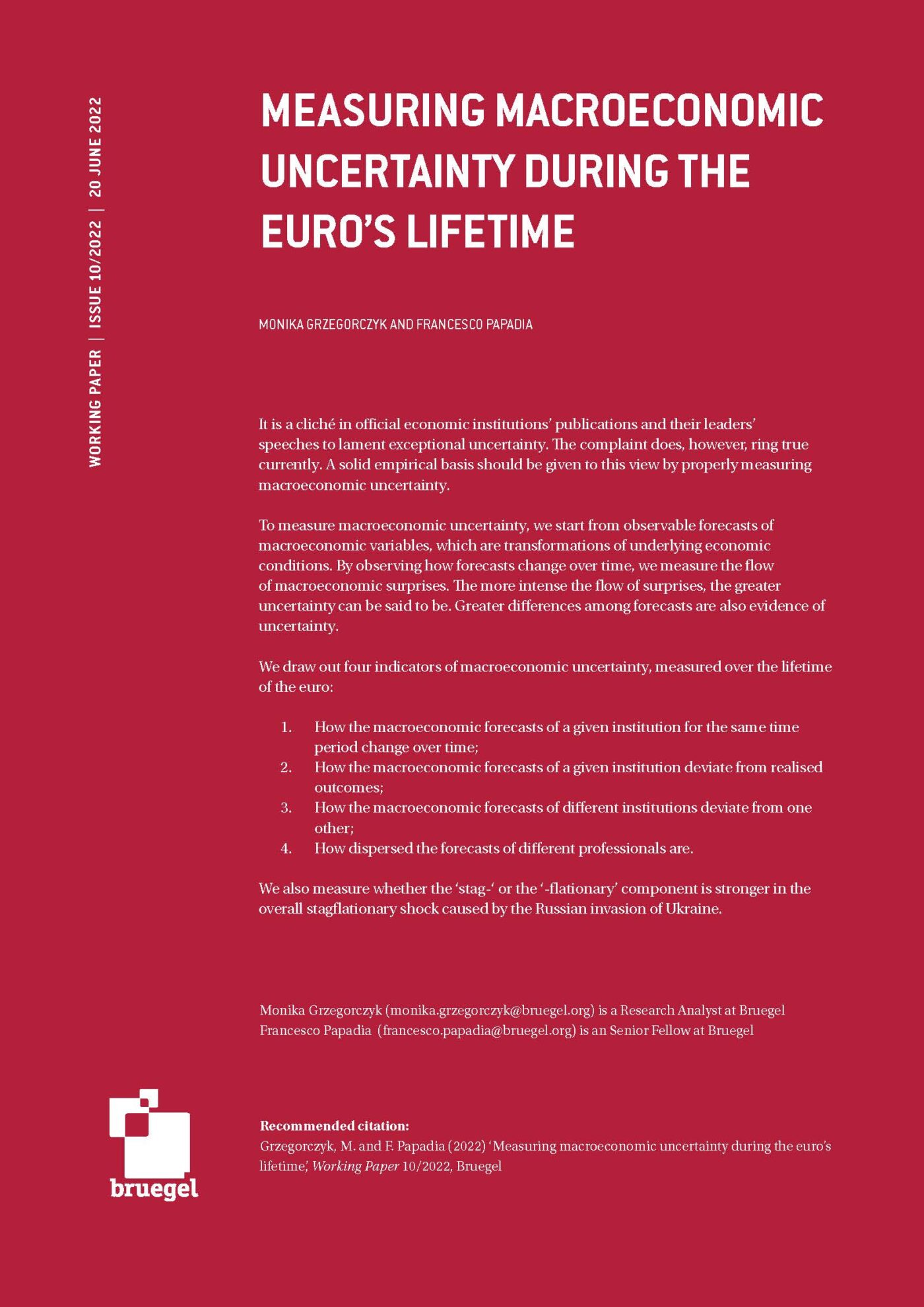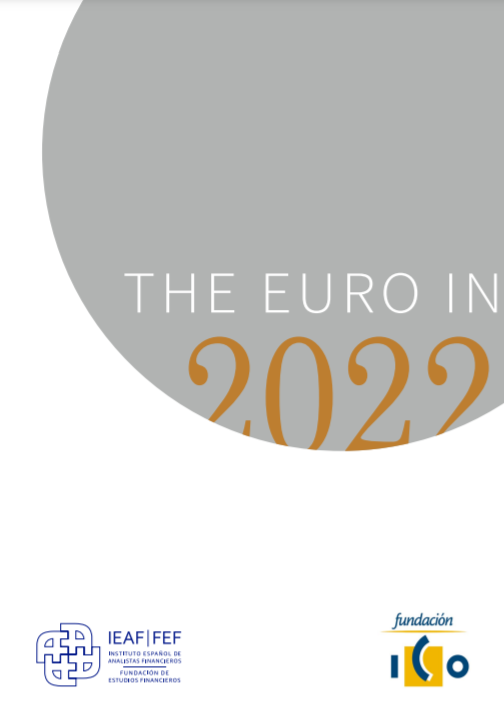Blog Post
Modernising European Competition Policy: A Brief Review of Member States’ Proposals
French, German and Polish governments have jointly proposed options for modernising EU competition policy. The debate to recalibrate European competition rules was already well underway. So, it is not surprising that proposals are consistent with other statements made by France and Germany. Yet, proposals do not address current issues weighing on the international competition community, such as conglomerate effects theory or algorithmic collusion.
The French, German and Polish governments have jointly proposed options for modernising EU competition policy. While speaking at Bruegel, Bruno le Maire, the French minister of economy and finance, qualified the joint proposal as aiming to initiate a debate between the European Commission and the member states. Of course, the debate to recalibrate European competition rules is well underway; it follows the German 2030 industrial strategy proposals presented by Economic Affairs Minister Peter Altmaier on 5 February 2019 and the Franco-German Manifesto for a European industrial policy fit for the 21st Century, of 19 February 2019. It should be of little surprise, therefore, that the proposals in the Joint Statement are consistent with other statements made by France and Germany on the interface between industrial policy and competition policy.
And yet, while billed as modernisation of European Competition Law, the proposals focus on limited areas, and horizontal merger policy in particular. They do not address, for example, current issues weighing on the international competition community, such as conglomerate effects theory or algorithmic collusion. So, the proposals are aimed only at modernising some aspects of competition law. And the choice of areas proposed for reform indicates which particular objectives are being pursued.
The options in the Joint Statement fall under seven headings, but for this analysis, there are three main groups of proposals; merger control, greater member state input and ‘BigTech’ issues. The objectives of the proposals appear simple. First, to help grow the EU’s industrial capability and address the negative impact of third-country state-directed companies affecting European interests. And second, to give political support for regulation of ‘BigTech’, which is a current political preoccupation.
Modernising Merger Control
The section entitled ‘Modernising Merger Control’ is an echo of the debate that followed the European Commission’s prohibition of the Siemens/Alstom tie-up. In particular, it calls for a review of the guidelines on horizontal mergers and market definition to introduce ‘more flexibility’ in merger review. The proposals imply that the Commission should be willing to take into account ‘competition at global level’ and in particular to factor in both long-term market outlook and the future strength of competitors from third countries. While the proposals do not refer to ‘European Champions’ Minister le Maire’s position is clear; “Competition policy is vital for us to allow European companies to grow and be world leaders.” Such a statement shows that the Minister, at least, sees the proposals as enabling the creation of European industrial power-houses to compete on the global stage. The problem that industrial organisation economists may have with such an approach is that it comes close to promoting the interests of specific companies, rather than markets as a whole (Petropoulos, 2019). How the European Commission can update merger rules to encourage competition without tacitly promoting the largest European players will be delicate.
Although not referred to under the ‘merger review’ heading, the Joint Statement also calls on the European Commission to draft guidelines to promote joint ventures that would foster co-operation to create European international capability. Joint ventures may certainly be an alternative if rules on consolidation are too onerous, this needs to be thought through, as concerns have been expressed that joint ventures increase the likelihood and incentives for collusion (Cheng and Kwok, 2017). It is quite feasible that joint venture initiatives will be part of broader industrial policy guidelines, as noted in the Franco-German Manifesto, where France and Germany reiterated their aim to identify credible consortia including seeking approval for state aid and notably for important projects of common European interest.
Modernising Merger Control: A Renewed focus on Efficiencies
The Joint Statement suggests that the European Commission provide greater clarity to ‘stakeholders’ on efficiencies brought about by a merger and on the evaluation of the competitiveness of industry in the appraisal of mergers. Efficiencies are economic benefits that may flow to the consumer that outweighs short term competition concerns. The proposal suggests that “specific guidelines could develop the range of efficiencies that could be taken into account in the competitive analysis”. Presumably, the idea is that such guidelines go significantly beyond what is currently contained in the 2004 Horizontal Merger Guidelines and that the Commission become far more open to accepting efficiency arguments than they have been in the past (Veugelers, 2012).
Usually, efficiency arguments are raised by the notifying parties but elsewhere in the Joint Statement (under the section of the proposing an enhanced role for Member State input in merger cases) there is a suggestion that the Member State Advisory Committee could conduct independent assessments of merger-specific efficiencies.
The Joint Statement notes that “the overall aim would be to strengthen the competitiveness of EU industry and European value chains without distorting competition on relevant European markets that would allow negative effects to arise for consumers and enterprises”. The proposals, therefore, seek to ensure greater clarity on what efficiency arguments may be deemed credible; ensure greater acceptance by the Commission of efficiency defences; and enable greater Member State scrutiny of efficiency arguments.
Modernising Merger Control: State Controlled Enterprises
The second overarching element of the Joint Statement aims, as Minister le Maire explained, at adapting merger control to the new economic realities facing Europe. In particular, this means taking into account third country state interventions in mergers where the acquiring undertaking is state-controlled or benefits from distortive state subsidies. There are some positive elements here. First is the reference to ‘control’ by third-country governments rather than mere ‘ownership’, given that state intervention can come in many forms. This is a pragmatic approach that looks at the effect of the link between third-country governments and the firms they control, notably where firms are assisting governments to pursue strategic or policy goals. Second, the Joint Statement may give a much-needed impetus to the European Commission to develop a coherent and consistent approach to the activities of state-controlled enterprises, drawing on its existing experience in this area. It could also provide much-needed guidance for the national competition authorities of the member states, whose policies in this regard have been inconsistent (Schrepel, 2019).
The proposals also seek to ensure that merger review is not blinded to important geopolitical trends. The proposals seek to address tendencies by sovereign states to “directly or indirectly subsidised third-country companies that adopt a strategic approach” or where states use transactions as part of broader strategies to assert economic dominance or autonomy. Merger review needs to factor in the market impact of companies that are not driven by a purely commercial rationale but rather directed by third-country governments in pursuit of their industrial policies.
The proposal suggests that the financial power of a state-controlled entity–for example where it benefits from subsidies or soft loans–be taken into account in assessing whether a merger significantly impedes competition. How the theories of harm could be related to financial power are not detailed. But the section on modernising merger control notes that competition from third countries’ state-backed or subsidised companies “could create long-term market conditions detrimental to European consumers”, presumably by driving out efficient firms who cannot match illegally subsidised firms, or that “low profitability of market entry may not be a significant barrier to entry for directly or indirectly subsidised third-country companies”, which implies a level of predatory practices. This is a more sophisticated effects-focused approach to how state-supported companies may act following a merger.
Of course, merger control is only relevant if mergers are notifiable. The proposals, therefore, suggest that turnover calculations should factor in the impact of state support in assessing whether notification thresholds are reached. In joint Franco-Chinese acquisition of UK nuclear energy plants (EDF/CGN/NNB, COMP/M.7850, (2016)) the Commission considered the issue of China General Nuclear Power Corporation’s (CGN) autonomy from the Chinese state, finding that the Central Chinese Assets Supervision and Administrative Commission (SASAC) not only owned CGN but had oversight of large state-owned enterprises (SOEs) in the sector. As a result, the European Commission was able to consider the turnover of all the energy market SOEs controlled by the SASAC, as the relevant turnover to assess whether the transaction required notification under the European merger control rules.
However, if transactions involve the consolidation between state-controlled enterprises, rather than the acquisition of a third party, such a transaction may well escape scrutiny as there would, technically, not be a change of control that requires notification. It will be interesting to compare how competition authorities address the intended merger of China’s two largest state-owned shipbuilding groups, China Shipbuilding Industry Corporation (CSIC) and China State Shipbuilding Corporation (CSSC) and how this affects the discussions on the future of European shipyards, notably Fincantieri’s intentions to acquire Chantiers de l’Atlantique.
In that context, the Joint Statement does not explore how the ‘modernisation’ of European merger policy would interact with the new regulation on foreign direct investment, that covers a broad range of sensitive sectors. Finally, the Joint Statement does not consider what other competition tools, such as unilateral conduct enforcement, could be considered in setting out rules to address any distortive effect of state-controlled entities.
Strengthening Political Input in Merger Cases
Another series of suggestions in the Joint Statement concern proposals for greater input by the member states in competition policymaking as well as input in the decision-making process on specific cases as well.
Of note is the paragraph introducing merger control modernisation that includes the notion of the ‘protection of strategic common European interest’. This notion is not one known in competition law, nor is this notion defined in the Joint Statement, which does not specify what strategic interests are (presumably if these are ‘common’, there is to agreement on them) nor what ‘protection’ entails. However, what this notion encompasses may be understood in the context of the proposals for political input, discussed below.
At a high level, there is a proposal for the Competitiveness Council to discuss merger policy more regularly “with regard to the competitiveness of EU industrial sectors in order to provide input into the European Commission’s strategy and policy”. Linked to this is the suggestion that the Directors-General for Competition in national ministries in charge of competition policy would help coordinate Member States’ input. There should be no issue with the Member States imputing into strategy or policy, but there could well be tensions if the Council were to use the opportunity to flag to the Commission which sectors should undergo consolidation or which mergers respond to the Council’s notion of industrial competitiveness. It may be that the competitiveness of EU industrial sectors is synonymous with ‘strategic common European interest’.
The more significant change is to ‘reinforce’ the Member State Advisory Committee (AdCom) on concentrations and to ‘upgrade’ the AdCom to be more effective in inputting into the European Commission’s case assessment. The input of the AdCom is currently pretty much a formality, so revitalising its role may enable better-informed decision making.
But the proposals go further and suggest that a reinforced AdCom could allow for broader discussions on ‘competitiveness’ considerations, presumably industrial policy. This means that rather than the national authorities attending the AdCom, representatives of the national ministries of economy and industry could well take part. It is safe to say that these proposals are aimed at seeking that other Member States engage more rigorously in the competition process.
‘BigTech’
The section on ‘Big Tech’ is the flip side of the industrial policy coin, where the EU feels squeezed between different types of competitive forces from China and the US. Even though there is a proposal that Big Tech ‘predatory acquisitions’ be subject to closer scrutiny the section does not focus on merger review. Rather, this section is a strong call to regulate ‘systemic platforms actors’ in one form or another and to identify data sharing or platform access remedies.
The Joint Statement refers to identifying Big Tech ‘systemic actors’ who should be subject to specific scrutiny “in accordance with the particular responsibility of these players”. The language used is not found in the competition law lexicon, leaving terms rather vague and therefore open to interpretation.
- The term Big Tech remains undefined. The term ‘systemic actors’ does not appear equivalent to the ‘dominant digital platforms’ as referred to in European Competition Commissioner Vestager’s Expert Report on the Digital Era. Instead, the term appears to qualify the critical role that certain platforms may play in an ecosystem.
- The reference in the proposal to ‘particular responsibility’ of players could refer to the ‘special responsibility’ which dominant companies are under in EU competition law or it could refer to a broader regulatory notion, as yet undefined. It is true that in a limited number of European antitrust cases, the ‘special responsibility’ on dominant undertakings has resulted in interoperability remedies to ensure access to platforms. However, these cases are very rare given that they require a finding that the dominant undertaking controls an ‘essential facility’, requiring access to be guaranteed.
- ‘Scrutiny’ could relate to antitrust investigations (and many large U.S. technology platforms are already under EU investigation, in one form or another) or may relate to a more general review e.g. through a sector enquiry or even regular monitoring through a special unit/instrument. It should be added that the brief proposals do not go much further than the Vestager Expert Report or the K.’s Digital Competition Expert Panel (the ‘Furman Report’), commissioned by Chancellor of the Exchequer, Phillip Hammond.
The proposals also suggest setting rules on data sharing and data access, including data portability and platform interoperability, which are remedies well recognised in competition law. There is also a reference to ‘unbundling’ which, in the platform context, may imply the separation of activities to some degree or form of vertically integrated businesses. Although this paragraph does not relate to merger review explicitly, remedies are easier to achieve in merger review cases (see e.g. Newscorp/Telepiù, COMP/M.2876 (2004); Siemens/Drägerwerk, COMP/M.2861 (2013); Liberty Global/De Vijver Media, COMP/M.7194 (2015); Worldline/Equens, COMP/M.7873 (2016)).
As noted, the ‘BigTech’ section is markedly different from the merger control section. That is because the merger review section seeks to address the geopolitical realities of third countries creating an unlevel playing field by strategically directing economic actors and to which European competition policy must react. The Big Tech debate is somewhat less geopolitical in nature but instead focused on how regulators should address market impact by commercial players, if distortive (with a touch of technology sovereignty thrown in). This latter topic is one that every major jurisdiction and market is struggling with.
Modernising European Competition Law: Next Steps
It is no coincidence that the Joint Statement proposal has been made when the European Commission is developing, at the request of the March 2019 European Council,
a long-term vision for the EU’s industrial future. This is expected for the end of 2019. The fact that the Franco-German-Polish proposals provide little specificity on what the reforms should actually entail may not be a surprise. It may be because the Member States are providing direction to the Commisson, which the Commission must elaborate on. In fact, the proposals can maybe be better understood in the context of the March 2019 commitment of the European Commission to identify how to fill existing gaps in EU law to address the distortive effects of foreign state ownership and state financing in the internal market also by the end of 2019.
In addition, it is clear that more support needs to be gathered amongst other member states in order to reach agreement on the principle on the scope of competition reform. And given that Minister le Maire also called on all Member States to join the Joint Statement contribution, we can assume that there will be a continued debate in the Council. We can also expect more concrete proposals from member states aimed at recalibrating competition policy under the new Commission.
Given the confluence of circumstances we can, therefore, expect the debate on reforms to heat up.
Republishing and referencing
Bruegel considers itself a public good and takes no institutional standpoint. Anyone is free to republish and/or quote this post without prior consent. Please provide a full reference, clearly stating Bruegel and the relevant author as the source, and include a prominent hyperlink to the original post.











